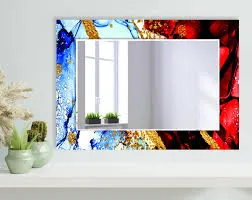

Understanding Low Iron Tempered Glass A Transparent Innovation
Low iron tempered glass has gained prominence in various industries due to its unique properties and advantages over traditional glass. As companies and architects seek to maximize natural light and enhance aesthetic appeal, low iron tempered glass emerges as a popular material choice. This article delves into what low iron tempered glass is, its benefits, applications, and the reasons for its growing demand.
What is Low Iron Tempered Glass?
Low iron tempered glass is a type of glass that undergoes a special manufacturing process designed to reduce the iron content, resulting in enhanced transparency and clarity. Standard glass typically contains a certain amount of iron oxide, which can impart a greenish tint to the surface. In contrast, low iron glass has less than 0.1% iron content, allowing for a clearer and more color-neutral appearance. Once the glass is made, it is then tempered, meaning it undergoes a heating and cooling process that increases its strength. This enhances its performance capabilities, making it suitable for a variety of applications.
Benefits of Low Iron Tempered Glass
1. Superior Clarity One of the primary advantages of low iron tempered glass is its exceptional clarity. Its minimal iron content ensures that it does not distort colors or images, making it ideal for applications where visual fidelity is crucial.
2. Increased Light Transmission Low iron tempered glass boasts a light transmission rate of up to 91%. This characteristic allows more natural light to enter a space, reducing the need for artificial lighting and creating a brighter, more inviting environment.
3. Aesthetic Appeal The crystal-clear quality of low iron glass is highly sought after in architectural designs. It is often used in façades, skylights, and glass railings to create stunning visual effects and a seamless connection with the outdoors.
4. Strength and Safety The tempering process not only strengthens the glass but also makes it more resistant to thermal stress and impact. If broken, tempered glass shatters into small, blunt pieces, reducing the risk of injury. This safety feature is particularly important in commercial spaces, where customer safety is a priority.
5. Energy Efficiency Low iron tempered glass can contribute to energy efficiency in buildings. By allowing more natural light to flood interior spaces, it can help lower heating and lighting costs, leading to a reduced carbon footprint.

6. Versatility This type of glass is versatile, suitable for a wide range of applications, including residential and commercial buildings, shower enclosures, glass doors, and display cases. Its adaptability allows architects to integrate it into various designs without compromising functionality.
Applications of Low Iron Tempered Glass
Given its various advantages, low iron tempered glass finds application in numerous fields
- Architecture and Construction Architects and designers utilize this glass for facades, windows, and curtain walls to create modern and aesthetically pleasing buildings that maximize daylight.
- Interior Design It is often used in interior applications such as partitions, shower enclosures, and countertops, where clarity and beauty are essential.
- Automotive Industry Low iron tempered glass is also employed in high-end vehicles where visibility and safety are paramount.
- Solar Energy The glass is increasingly used in solar panels, as its high light transmission properties enhance the efficiency of photovoltaic cells.
Conclusion
Low iron tempered glass represents a significant advancement in glass technology, merging clarity, durability, and versatility. Its ability to allow natural light to enhance living and working spaces while ensuring safety and energy efficiency makes it an invaluable material in modern architecture and design. As the demand for aesthetically pleasing and functional building materials continues to grow, low iron tempered glass is poised to remain at the forefront, redefining how we perceive and utilize glass in our environments. Whether for residential, commercial, or industrial applications, this innovative glass solution is undoubtedly a game-changer in the world of design and architecture.